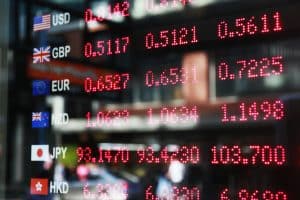 Exchanges are seeing record levels of FX activity as geo-political and economic conditions, combined with regulatory uncertainty, are driving hedge funds and asset managers to shift their interest from OTC to listed products.
Exchanges are seeing record levels of FX activity as geo-political and economic conditions, combined with regulatory uncertainty, are driving hedge funds and asset managers to shift their interest from OTC to listed products.
Over $200 billion ($210 billion) was transferred in CME Futures for September to December, with spreads for rolling risk in OTC markets among the G5 currency pairs (USD, GBP, EUR, JPY and CHF) in the three weeks prior to the September futures expiry hitting their widest level for six years. Asset managers and hedge funds are currently holding over two-thirds of open interest positions, the total number of open contracts, in the major currency pairs on CME’s $80 billion (ADV) listed futures market.
In calendar spreads, the most common way to achieve rollover, the minimum price increment for over 90% of regular trading hours during the September roll indicates highly liquid markets. Many trades which would be large enough to be executed as block trades were transacted through the central limit orderbook, with 78% of the volume traded as a spread on CME Globex large enough to be traded as a block, highlighting how liquid trading conditions currently are at the exchange.
Several factors are combining to cause investment managers to reconsider how and where they source pricing and liquidity to optimise their roll activity for OTC positions. These include market volatility driven by geo-political risk, along with uncertainty around central bank interest rate policy. In addition, regulatory impact from the uncleared margin rules (UMR), which force significant changes to the way collateral is posted as initial margin for OTC derivatives, and SA-CCR (reforms to how banks calculate their capital requirements for counterparty credit risk), are also driving activity on-exchange.
“The data from our markets indicates that asset managers and hedge funds are enjoying significant cost savings from the efficiencies of trading FX in a cleared listed market environment verses OTC.” confirmed Paul Houston, the global head of FX at CME Group. “With the year-end turn looming and the impacts of regulations increasingly better understood, access to additional liquidity that results in a cleared, netted FX Future can assist with optimising portfolios to manage the impacts of SA-CCR and UMR as well as continued macro-driven market volatility in FX.
“We still haven’t seen the full impact to customers from UMR Phase 6 and SA-CCR but many are looking at listed FX futures to manage their costs, either through a more efficient capital treatment or because netting and clearing against a single regulated central counterparty reduces exposures and hence costs considerably,” he continued, speaking exclusively to The TRADE.
“2023 will continue to see an emphasis from market participants to optimise capital more efficiently. In particular, SA-CCR and UMR may serve as catalysts for market participants to seek complimentary ways to transact and manage their FX exposures. We have seen this trend emerge in 2022 and expect a continuation in 2023. Centrally cleared futures have long been recognised for their capital efficiencies, and our focus has been on enhancing the products to make them as cost effective and accessible as possible. We see execution choice as particularly important – market participants can access these efficiencies through relationship trading, blocks and EFRPs, as well as our highly liquid central limit order book.”